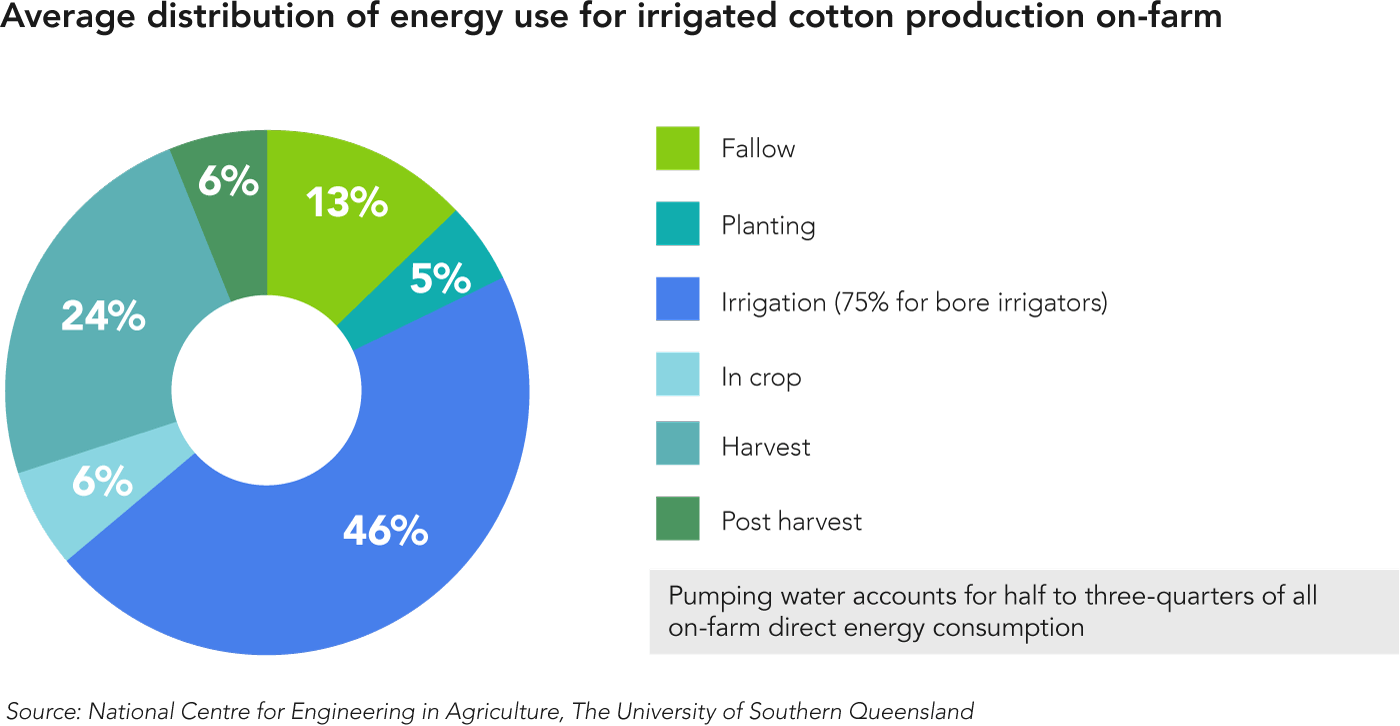Energy – Australia
Getting a handle on energy
Energy use is a major priority for Australian cotton growers. Energy, including both electricity and diesel, is also one of the fastest growing costs for cotton growers.
Energy use efficiency describes the total amount of energy used on farm (in the form of electricity, diesel or other sources) compared to the amount of production. If energy consumed can be reduced, while production is maintained or increased, energy use efficiency is improved. This may be one of the fastest and easiest ways to improve profitability and will also reduce greenhouse gas (GHG) emissions.
To help Australian cotton farmers identify their potential for saving energy costs, the industry has developed protocols and web-based tools known as EnergyCalc. These tools allow farmers to evaluate their energy performance and identify potential savings. Individual assessments have led to energy cost savings as high as 30 percent.

Australian cotton farmers continue to adopt energy saving practices such as:
- Measuring and optimising irrigation pump performance
- Fuel-efficient farm machinery
- Controlled traffic systems
- Moving from conventional to minimum-tillage systems (creating savings of around 10 percent of fuel use on farm)
- Using alternative sources like solar power
- Ensuring equipment is well maintained and operating efficiently
- The integration of diesel-gas systems
The myBMP’s “Energy and Input Efficiency” module contains 18 checklist items relating to efficient energy inputs such as electricity, fuel and fertilisers. It includes:
- Monitoring farm energy use
- The design of pump stations
- Closely measuring irrigation pump performance
- Optimising energy use in tractors
Continue Reading:
Explore the research and resources we’ve pulled this information from.

